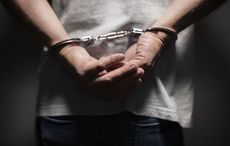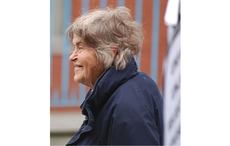Five thousand Irish soldiers who deserted the neutral Irish army to help aid the British in the fight against Hitler’s Germany in World War II returned to Ireland to face their lives as outcasts following the war.
For deserting the Irish army to help the British, such soldiers were named on a confidential list nicknamed the “Starvation Orders” at the orders of Eamon de Valera.
BBC News reports on the phenomenon of Irish soldiers being persecuted upon their return to Ireland after fighting in WWII. They spoke with Phil Farrington, now 92 years old and living in Dublin’s dock areas, who helped serve at D-Day as well as the liberation of the German death camp Bergen-Belsen. However, he wears his war medals only in secret. "They would come and get me, yes they would," Farrington asserts about Irish authorities.
Farrington was among 5,000 soldiers who, after deserting Ireland’s neutral army to go serve under the British in the war against fascism, came home to Ireland to find that “they were formally dismissed from the Irish army, stripped of all pay and pension rights, and prevented from finding work by being banned for seven years from any employment paid for by state or government funds.”
Alongside the 5,000 soldiers who deserted the Irish to serve were “tens of thousands” of civilians who signed up to fight under the British.
The soldiers were compiled into a list that has come to be known as the ‘Starvation Orders,’ the title of which would take on a very literal sense for those who were listed along with their families.
"My father was blacklisted and away all the time, picking turnips or whatever work he could get. It's still painful to remember. We were treated as outcasts,” says Paddy Reid, son and nephew of those men who fought the Japanese at the battle of Kohima Ridge. He recalls a childhood with little food, and movement from one slum to another.
________________________
Read More:
U.S. military plane vandalized at Shannon airport
Veteran’s Day ‘Lest we forget’ – The Irish who died in World War One
World War II Spitfire guns 'like-new' after 70 years in an Irish bog
________________________
Cork native John Stout served with the Irish Guards armoured division which raced to Arnhem to capture a key bridge. He also fought in the Battle of the Bulge, ending the war as a commando. He says upon returning home, he too faced the same persecution and criticism as the other Irish soldiers did.
However, Stout also says that at the time, Ireland had only recently broken away from Britain, and resentment was still strong. "They didn't understand why we did what we did. A lot of Irish people wanted Germany to win the war - they were dead up against the British."
Professor of history at Trinity College, Gerald Morgan, says that to prevent civil unrest, Eamon de Valera was forced to draw up the lists preventing the soldiers from attaining work upon return.
The lists, however, are now regarded as widely inaccurate. "It contains the names of men who were to be punished but who'd already been killed in action, but not the names of men who deserted the Irish army to spend their war years as burglars or thieves," said Robert Widders, author of ‘Spitting on a Soldier’s Grace,’ a book about the deserters' treatment.
Recently, members of the Dail have been looking to provide pardons for those who are still alive and on the list. "What happened to them was vindictive and not only a stain on their honor but on the honor of Ireland," TD Gerald Nash said.




Comments